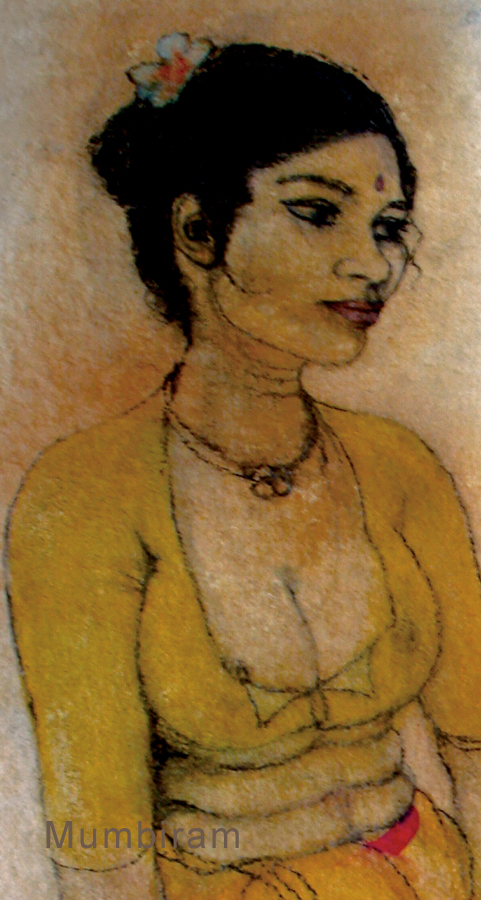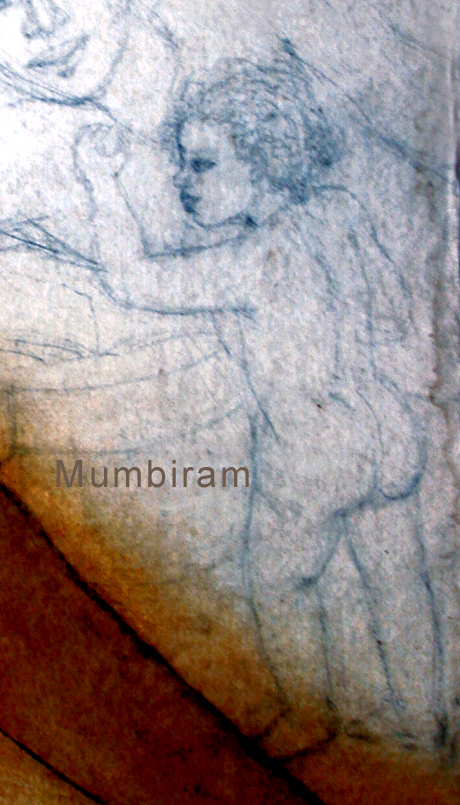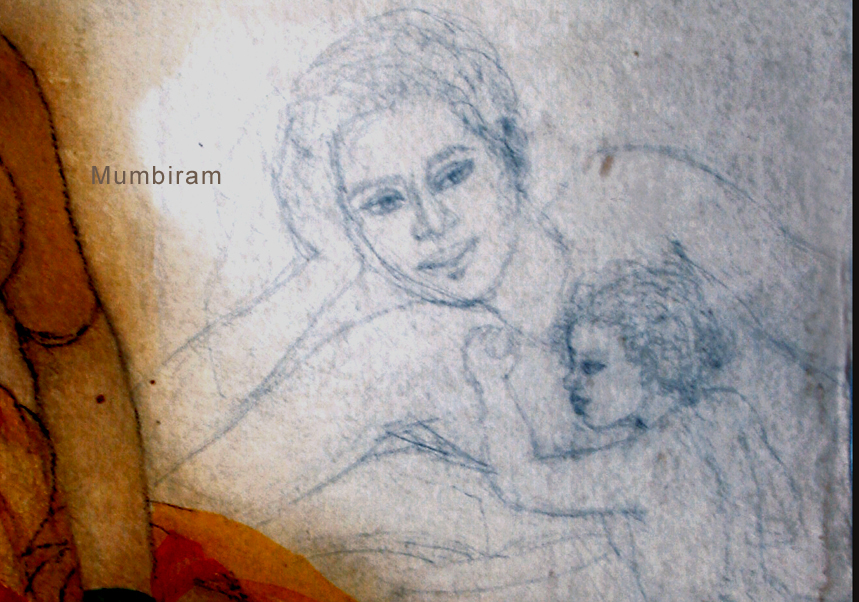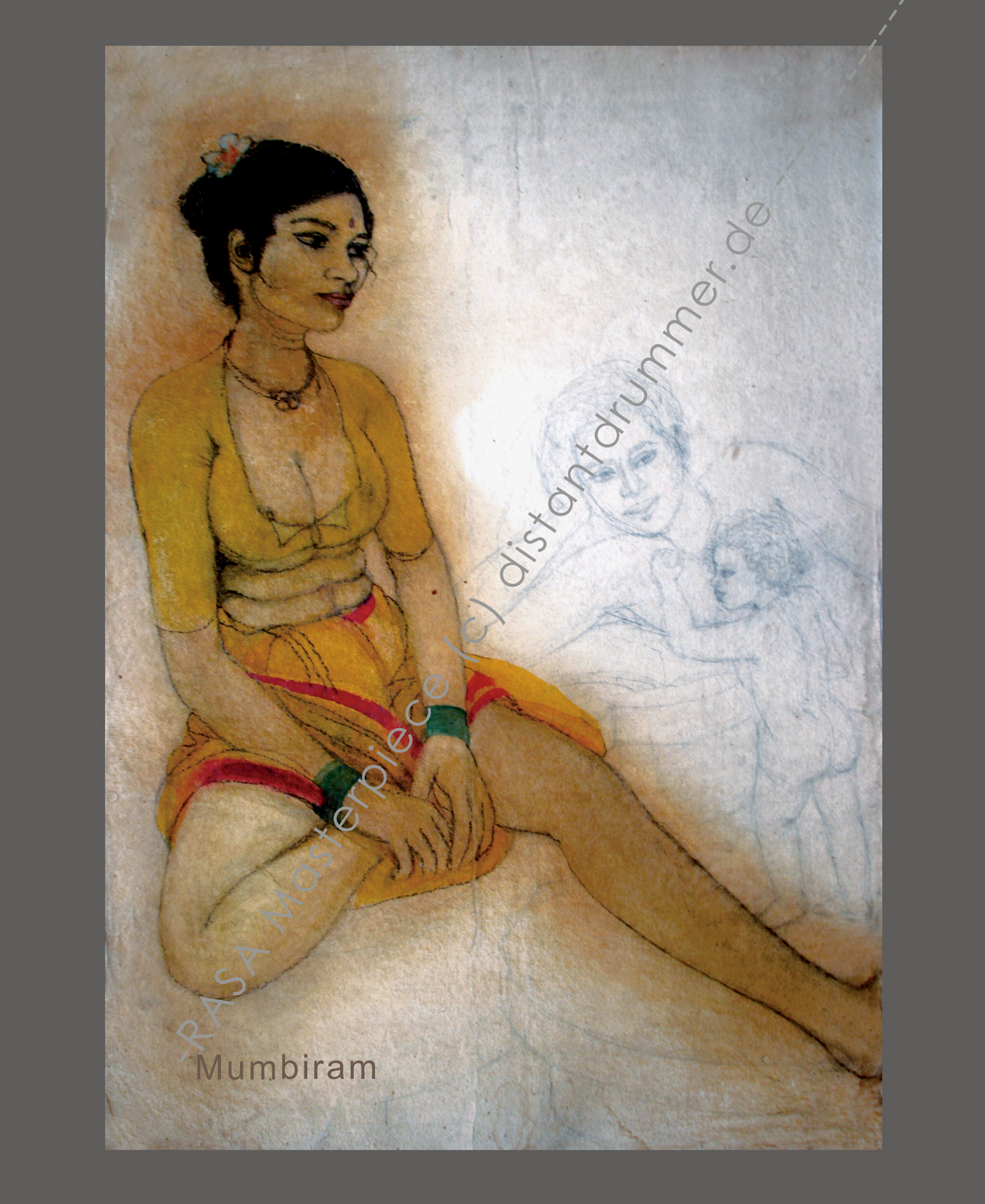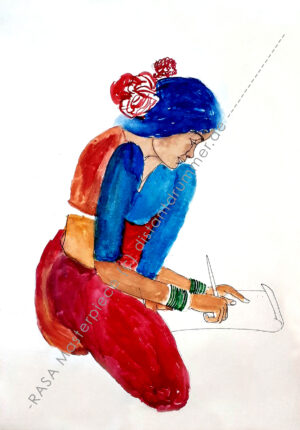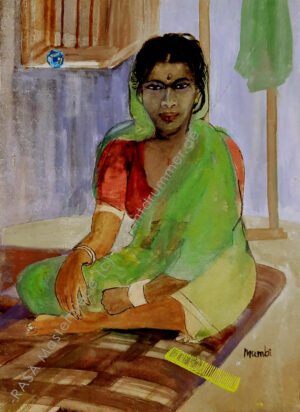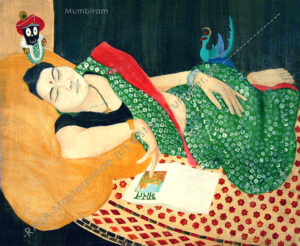““Mahabhava” – Rasa Masterpiece” has been added to your cart. View cart
“After the Dance”- Rasa Masterpiece
2.000,00 €
incl. 7% VAT plus Shipping Costs
Rasa Masterpiece “After the Dance”- by Mumbiram
A Flagship of Rasa Renaissance
-
90×110 cm
Collector’s Item
High Quality Canvas Print
individually signed by Mumbiram
Description
Collector’s Item Canvas Print of Original Masterpiece “After the Dance” by Mumbiram
Here Mumbiram is imagining himself to be the man in the life of a tamasha danseuse. She has come home after an exhausting on-stage performance. Now she is with her baby and her man. He has been with their baby while she was away. She has taken off the heavy ankle-bells and she is resting her legs. She has unbuttoned her close-fitting yellow blouse and she has pulled up her yellow saree above the knee. The portrait of the danseuse is executed with consummate skill. What appears in the background as soft pencil work is what creates the story.
90 x 110 cm
High Quality Canvas Print
individually signed by Mumbiram
This is a collector’s item and you will get your Rasa Masterpiece individually signed by Artist Mumbiram.
Rasa Appreciation of original masterpiece “After the Dance” by Mumbiram
“After the Dance”
(Charcoal and Watercolor on cotton-rag Hand-made Paper, Pune 1993, Mumbiram)
Here Mumbiram is imagining himself to be the man in the life of a tamasha danseuse. She has come home after an exhausting onstage performance. Now she is with her baby and her man. He has been with their baby while she was away. She has taken off the heavy ankle-bells and she is resting her legs. She has unbuttoned her close-fitting yellow blouse and she has pulled up her yellow saree above the knee. The portrait of the danseuse is executed with consummate skill. What appears in the background as soft pencil work is what creates the story.
Over 40 years ago, in Cambridge Massachusetts, Stuart Cary Welch of Harvard’s FOGG Museum wrote:
“…Rooted in Indian traditions, yet aware – without being overcome – of such western artists as Matisse, Picasso and Steinberg, Mumbiram deserves a high position among contemporary Indian painters.”
The great authority of ‘Hindu and Muslim Painting’ showed great intuitive perception of Mumbiram’s firm roots in classical as well as contemporary India.
Rasa Art is created through, and is about, real life experiences that artists and art-lovers share together. The Rasik Artist’s life and his art are intertwined in a very easy and graceful way. To understand the circumstances that created the painting is the joy of appreciating a Rasa creation.
It would seem that Mumbiram himself had always liked to dance. In truth he started dancing ever since his love for Krishna became manifest. He always danced for Krishna. His dancing was very unique. It was of a genre of its own. His dance on the street on the night of Gokulashtami in 1985 was remembered even after all these years by all those who were there . He loved to dance at Akshi beach. He often danced at his favourite riverside spots in Pune.
Mumbiram has also been interested in Tamasha folk dance. Tamasha is the dance form that folk people of Maharashtra are traditionally familiar with. Village festivals are sure to feature Tamasha Wag theatre. The young women are dressed in the traditional 9 yard sarees. Mumbiram is fascinated by many many lavni songs. V.Shantaram’s celebrated classic “Honaji Bala” is one of Mumbiram’s all-time favourite movies. He never tires of watching danseuse Dipti Aher dancing to “Yelkot Yelkot Jai Malhaar” or “Kunyaa Gaavaacha Aala Paankharu” and many other songs. He once met Dipti backstage in her dressing room and presented her one of his own Krishna pictures.
Mumbiram often visited the Aryabhushan Tamasha Theatre on the eastern end of Laxmi Road. It was dedicated to Tamasha dance. There were performances every night of the week. As a regular visitor Mumbiram had come to know some of danseuses in person.
Quite apart from this background information, only those who knew Mumbiram during his days at the Mandai vegetable market would know the inside story of the making of this extraordinary portrait.
